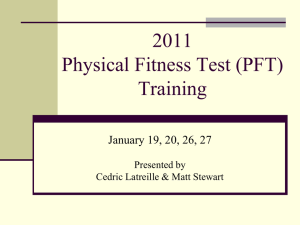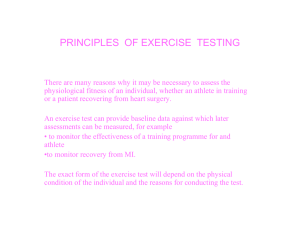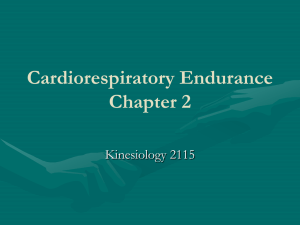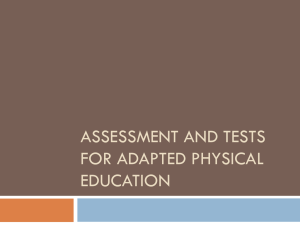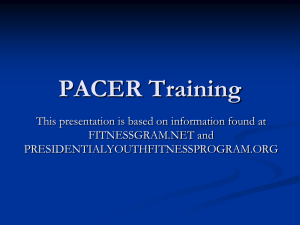New FITNESSGRAM Standards
advertisement
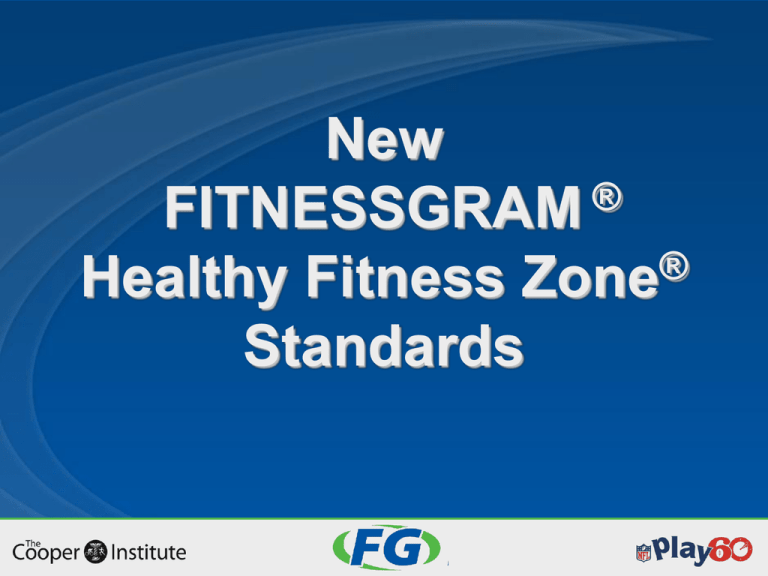
New ® FITNESSGRAM ® Healthy Fitness Zone Standards Scientific Advisors Charles B. Corbin, Ph.D. Kirk J. Cureton, Ph.D. Scott Going, Ph.D. Dolly Lambdin, Ed.D. Matthew T. Mahar, Ed.D. James R. Morrow, Jr., Ph.D. Robert P. Pangrazi, Ph.D. Russell R. Pate, Ph.D. Sharon A. Plowman, Ph.D. Jodi Prochaska, Ph.D. Georgi Roberts, M.S. Weimo Zhu, Ph.D. Staff Charles L. Sterling, Ed.D. Marilu D. Meredith, Ed.D. Gregory J. Welk, Ph.D. Need for New Standards Aerobic Capacity Excessively high passing rates for young girls Classification disagreement between PACER and One Mile Run Body Composition Standards for very young children did not discriminate adequately Much more data for children is now available upon which to base standards Basis for New Standards Nationally representative data on children from National Health and Nutrition Survey (NHANES) Analyses were conducted to find levels of body fatness and aerobic capacity that are associated with increased risk of metabolic syndrome Age and Gender specific taking into account normal changes during growth and maturation What is Metabolic Syndrome? Considered to have metabolic syndrome if you have three of the five conditions. High blood pressure High fasting glucose High waist circumference High triglycerides Low HDL cholesterol Characteristics of New Standards Young boys and girls do not differ substantially but follow different patterns as age increases New standards will classify children into three zones: Healthy Fitness Zone Needs Improvement – Some Risk Needs Improvement – High Risk Three zones allow messaging to be much more specific Unique to New Body Composition Standards These are not the CDC percentile standards, they are criterion standards There will still be a Very Lean zone Body Composition standards were established based on levels of body fatness associated with increased risk of health problems Levels of Body Mass Index were equated with these levels of body fatness Body Composition for Females % Body Fat Female Body Fat Standards 45 40 35 30 25 20 15 10 5 0 NI-High Risk NI-Some Risk HFZ Very Lean 5 6 7 8 9 10 11 12 13 14 Age in Years HFZ NI-Some Risk NI-High Risk Current 15 16 17 >17 Body Composition for Females BMI Female BMI Standards 30 28 26 24 22 20 18 16 14 12 10 NI-High Risk NI-Some Risk HFZ Very Lean 5 6 7 8 9 10 11 12 13 14 15 16 Age in Years Healthy Fitness Zone NI-Some Risk NI-High Risk Current 17 >17 Body Composition for Males % Body Fat Male Body Fat Standards 45 40 35 30 25 20 15 10 5 0 NI-High Risk NI-Some Risk HFZ Very Lean 5 6 7 8 9 10 11 12 13 14 15 Age in Years HFZ NI-Some Risk NI-High Risk Current 16 17 >17 Body Composition for Males Male BMI Standards 30 NI-High Risk 28 26 NI-Some Risk BMI 24 22 20 HFZ 18 16 14 Very Lean 12 10 5 6 7 8 9 10 11 12 13 14 15 16 17 Age Healthy Fitness Zone NI-Some Risk NI-High Risk Current >17 Unique to New Aerobic Capacity Standards All output will be expressed as Aerobic Capacity (VO2max) rather than as PACER laps or One Mile Run time. Calculation of Aerobic Capacity requires the input of height and weight – Body Mass Index is a very critical factor in one’s ability to perform aerobically. Without BMI many students may be classified incorrectly. Aerobic Capacity (VO2max) for Females Aerobic Capacity Female Aerobic Capacity 50 48 46 44 42 40 38 36 34 32 30 HFZ NI-Some Risk NI-High Risk 10 11 12 13 14 15 16 17 Age in Years NI- Some Risk Healthy Fitness Zone Previous Standards >17 Aerobic Capacity (VO2max) for Males Aerobic Capacity Male Aerobic Capacity 50 48 46 44 42 40 38 36 34 32 30 HFZ NI-Some Risk NI-High Risk 10 11 12 13 14 15 16 17 Age in Years NI-Some Risk Healthy Fitness Zone Previous Standards Aerobic Capacity (VO2max) Males vs. Females 50 48 46 44 42 40 38 36 34 32 30 10 11 12 13 14 15 16 17 >17 Girl's NI 37.3 37.3 37 36.6 36.3 36 35.8 35.7 35.3 Girl's HFZ 40.2 40.2 40.1 39.7 39.4 39.1 38.9 38.8 38.6 Boy's NI 37.3 37.3 37.6 38.6 39.6 40.6 41.1 41.2 41.2 Boy's HFZ 40.2 40.2 40.3 41.4 42.5 43.6 44.1 44.2 44.3 How Will the New Standards Change Test Administration Test administration does not change The test items are still the same The data that is entered in the computer is the same The one thing that will be different is that motivation for children on the aerobic test cannot be based on how much they have to do. Children will have to “do their best” Changes will show up when you print reports – group and individual How Do I Get the New Standards Posted at www.fitnessgram.net In version 8.6 and 9.1 of the FITNESSGRAM software Contact fitnessgram@cooperinst.org 972-341-3261


